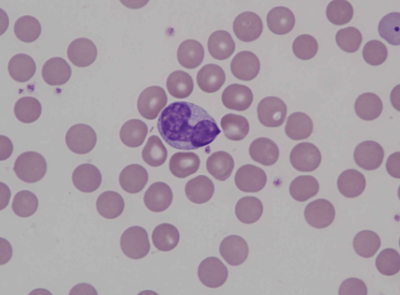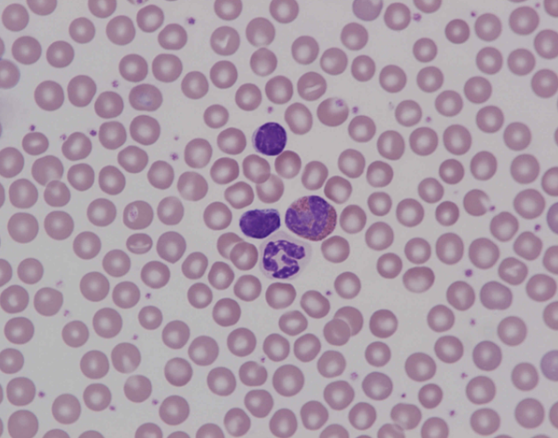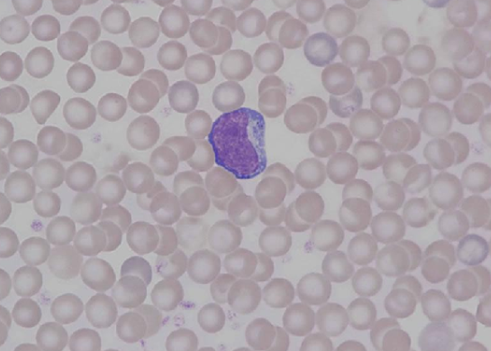Scientific Image Gallery
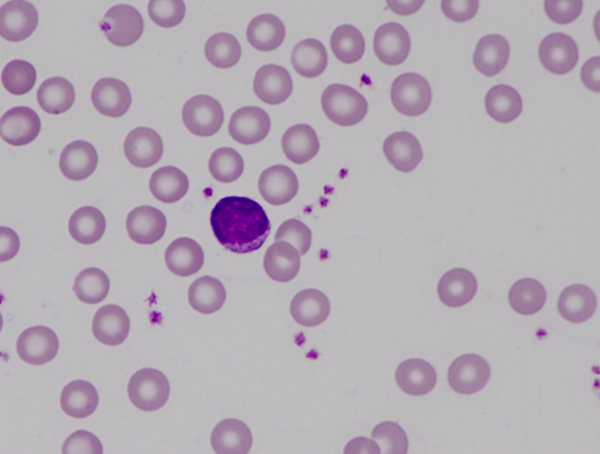
Small lymphocyte with slightly rough chromatin which stains dark purple. Purple azurophilic granules are present in the narrow band of cytoplasm.
<p>Small lymphocyte with slightly rough chromatin which stains dark purple. Purple azurophilic granules are present in the narrow band of cytoplasm. </p>
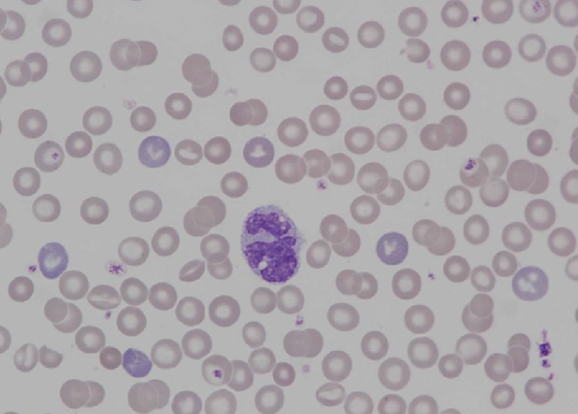
Blood smear of an aged rat (17-month-old) showing a picture of severe anaemia. In the centre, there is a neutrophil showing an atypically shaped nucleus, likely as a result of abnormal cell division.
<p>Blood smear of an aged rat (17-month-old) showing a picture of severe anaemia. In the centre, there is a neutrophil showing an atypically shaped nucleus, likely as a result of abnormal cell division.</p>
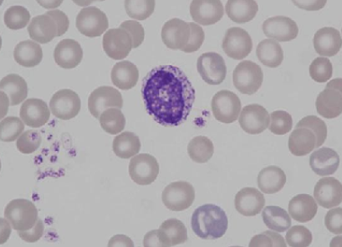
The nucleus is doughnut-shaped with a clear outline suggesting that the basophil is relatively juvenile. Numerous small, purple granules are present.
<p>The nucleus is doughnut-shaped with a clear outline suggesting that the basophil is relatively juvenile. Numerous small, purple granules are present.</p>

Typical eosinophil of a rat. The doughnut-shaped nucleus is twisted and there are numerous small, round, reddish granules filling the cytoplasm.
<p>Typical eosinophil of a rat. The doughnut-shaped nucleus is twisted and there are numerous small, round, reddish granules filling the cytoplasm.</p>
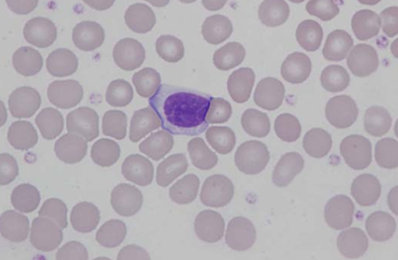
Large lymphocytes have a diameter up to 15 μm with a variable amount of cytoplasm, varying from deep to pale blue, sometimes containing large, dark staining, azurophilic granules.
<p>Large lymphocytes have a diameter up to 15 μm with a variable amount of cytoplasm, varying from deep to pale blue, sometimes containing large, dark staining, azurophilic granules.</p>
